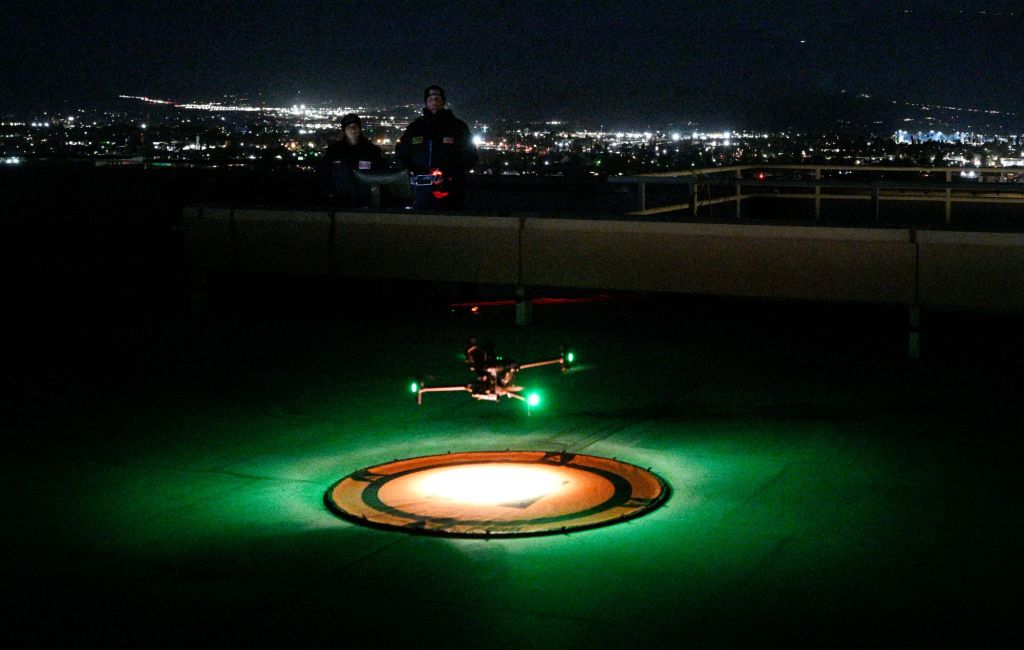
The San Bernardino County Fire Department is hoping to buy three more drones after conducting a pilot program in which the unmanned aircraft responded to reports of fires in the city of San Bernardino and provided images and data.
In some instances during the 30-day test that started in January, images from the drone showed that the report was unfounded or that the flames were coming from a homeless person’s warming fire. That eliminated the need for a fire engine to respond, allowing it to remain available for critical calls.
In other instances, the drone provided information to responding engines that helped firefighters form a plan before they even arrived.
“It was 100% successful,” said Engineer Jeff Alexy, the department’s robotics program manager.
The department hopes to have the new drones airborne by August if the county Board of Supervisors approves the purchase, Alexy said.
The department estimates that the drones will cost approximately $15,000 each and that the program would incur $200,000 in annual operating costs, not including the pilots.
Two drones would be stationed in the city of San Bernardino and one in Hesperia. The drones could also be launched to reports of a person or power lines down or traffic collisions, Alexy said. That would help determine the exact locations and the amount of resources required ahead of firefighters’ arrival.
In the last three months of 2024, the agency’s firefighters responded to 833 “unknown-type-fire” calls in San Bernardino alone, making the city a prime base.
Hesperia was chosen because it is a rural area where a fire engine can take 15 minutes to arrive. By launching the drone, the operator can size up a situation more quickly and determine the best way to access the scene on roads that are sometimes unpaved, Alexy said.
“We’re pretty excited,” Alexy said. “It’s going to save our guys so much time.”
The new drones will be technologically superior to those in the current fleet. An operator must be with a current drone to launch it, and the batteries must be switched when it returns.
An operator would be able to fly the new drones remotely from anywhere in the world as long as he or she has an internet connection. Those “drones in a box,” as Alexy calls them, can land in a box where they will automatically recharge.
The goal is to be able to fly drones 24/7, Alexy said.
The department experimented with a drone from atop the 12-story, downtown Caltrans building, because the operator had to be able to see it. But the department now has a Federal Aviation Administration waiver to fly drones out of sight of the operator.
During the pilot period, a dispatcher would relay the location of a fire to Alexy and Capt. Kristian Cavada, the spotter; Alexy would launch a drone that featured high-definition and thermal-imaging cameras. On one fire, the drone traveled to the location and performed a thorough search in a total of 4 minutes and 33 seconds — about the time it would have taken an engine just to get there.
The department is examining other high-tech tools: It also hopes to employ robots to search collapsed buildings as well as underground and underwater areas. In June, officials watched a demonstration of a flying ultralight that takes off vertically and can deliver a paramedic into hard-to-reach places.
Originally Published:



